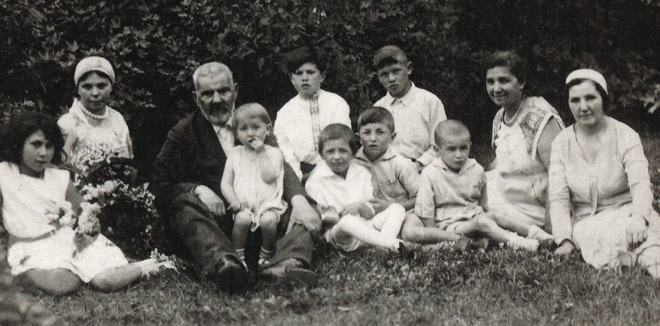By Mary-Lou Weisman. LITHUANIAN HERITAGE March / April 2021
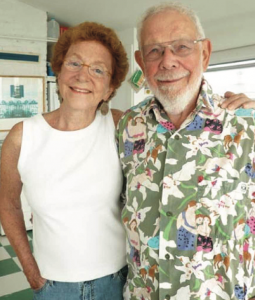
For more than half a century, writer and cartoonist Al Jaffee has been gleefully putting a premature end to the innocence of American youth in the pages of MAD, this country’s first popular satiric magazine. Suddenly, parents were hypocrites, teachers were dummies, politicians were liars, life wasn’t fair, and our culture was changed forever. MAD ceased publication in 2018 after 67 years, leaving millions of fans without MAD’s freckle faced “What me worry” mascot, Alfred E. Neuman. Gone, too, were Al Jaffee’s signature “fold-ins,” – a spoof on Playboy magazine’s fold outs – a marvel of artistic engineering that no one has been able to replicate. Happily all of MAD’s 550 issues can be found on line.
On March 13th of 2021, Al celebrated his 100th birthday! I was asked by the editor of Lithuanian Heritage to write this article, which focuses on extracts from my book, Al Jaffee’s Mad Life, published in 2010, (by !t Publishing, a division of HarperCollins, NY). The book describes a unique aspect of Al’s life – his relationship to the Zarasai region of Lithuania.
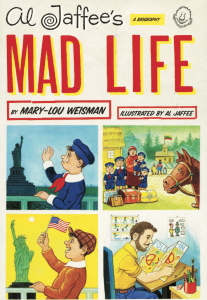
I met Al Jaffee and his wife, Joyce, in the early 1970s on Cape Cod, where, along with eight other families, we shared space in a repurposed 19th century inn on Provincetown Bay. A common deck and laundry room made friendships inevitable. One day while Al and I were walking on the flats at low tide, we came upon a veritable blanket of dead jellyfish. “Too bad we don’t have any peanut butter,” Al quipped, thus sealing a friendship between two silly people that lasts until this day. Of course, I knew him as a writer and cartoonist for MAD magazine, and, as I got to know this shy man, he began to open up to me and tell me the story of his life as a “reverse immigrant.”
Born in Savannah to parents who emigrated from Lithuania, he was effectively kidnapped at the age of six, along with his three younger brothers, by his mother, Mildred, an Orthodox Jew, who couldn’t tolerate modern American life and yearned to return to Zarasai, a shtetl near the Latvian border. By contrast, her husband, Morris, had become an instant, enthusiastic American and soon landed a lucrative job as manager of Blumenthal’s Department store. Mildred told her husband, that she was taking their four sons back to visit her parents for a month or so, but in fact she had no intention of returning.
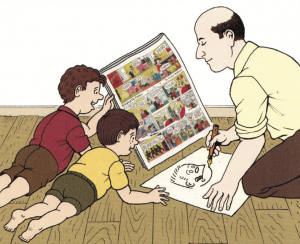
The fearsome journey, which took them from the 20th to the 19th century, consumed more than three weeks. They traveled by boat from New York to Hamburg and Klaipėda, then to Kaunas, and finally, 184 kilometers later, in a rickety bus by gravel road to Zarasai. At a time when Jews were fleeing Eastern Europe, Mildred Jaffee chose to return to Lithuania.
Al was in no mood to appreciate the beauty of hilly Zarasai, a town of about 4,200 people, which is located between two lakes and covered with birch and pine forests. Nor was he prepared for infestations of lice that feasted lavishly on his body, or the menacing wolves, the outhouses, the monthly communal baths, and winters that lasted from October to April, when temperatures often dropped to minus 20 degrees Fahrenheit. Locals called Zarasai the “Siberia of Lithuania.” Today’s tourists call it “the Switzerland of Lithuania.”
There was no formal ghetto in Zarasai. About one- third of the citizens were Jews, and the rest Poles, Germans, and Lithuanians, all of whom lived on separate streets. In 1928, when Al arrived, anti-Semitism in Lithuania was relatively benign compared to neighboring Poland. Nevertheless, Al was treated like a second-class citizen, much like the Negros in his native Savannah.
Mildred’s father, Chaim Gordon, a relatively wealthy and prominent member of the Jewish community, was horrified when Mildred showed up, unannounced, with Al and his brothers, Harry, Bernard and David in tow. Only a crazy person, he assumed, would return from the United States, the land of promise, to primitive Zarasai. Still, Al and his brothers found a measure of stability and kindness with their mother’s relatives, especially when they recognized that Mildred was a neglectful mother who abandoned her children and frequently failed to feed them when she went on religious retreats.
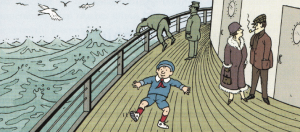
Al and Harry, the two eldest, had inherited their father’s artistic talent that would eventually help them make friends in Zarasai. Al was teased and bullied when he first arrived, but after he quickly learned to speak Yiddish, they relished his stories of life in America.
Al’s father was true to his promise. When the Sunday comics started to arrive and Al shared them with the other kids, the bullying stopped and they included him in their ragamuffin gang of Jewish kids.
Al dazzled his new friends by drawing cartoon characters in the dirt with a stick. Paper was rare in Zarasai.
Al had been a curious, freelance hell-raiser in Savannah. He lit fires so he and his friends could watch the fire trucks arrive and put them out. He dove from the roof of his house into a palm tree to see if he could fly. He brought that same questionable talent to Zarasai.
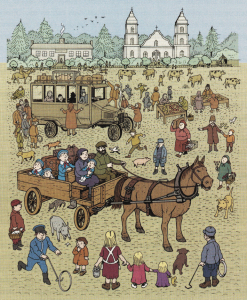
After a year in Zarasai, just when Al had adjusted to his new, primitive life, Morris Jaffee arrived to take his family home. He had been writing letters to his wife, pleading with her to come home. The lengthy two-way trip had cost him his job at Blumenfeld’s and left him penniless.
Mildred exacted a severe price for agreeing to leave. She insisted upon living in Far Rockaway, where Al imagines there must have been a lot of Orthodox synagogues; this, in spite of the fact that the only job Morris could find was in a cigar store in Charlotte, North Carolina. He commuted to his family on the weekends. Maybe it would have been different if he had returned to Savannah, but Al, bitterly disappointed, felt alienated from his father. Neglected once again by his mother, Al wandered the beaches, harvesting and smoking cigarette butts. Al was relieved when his mother, after a stay of about one year, saved up enough money to return to Zarasai.
On their return trip to Lithuania in 1929, when Al was eight years old, their mother rented a small cottage on the estate of 21-year-old Karolka Mikutovistsch (Karolis Mikutavičius), a Polish-Catholic, and his three sisters. At a time when Al had given up all hope of ever seeing his father again, Karolka filled that emotional vacuum, serving as both father and big brother. Unlike most of the gentiles in Zarasai, Karolka harbored no anti-Semitic feelings. He took Al and Bernard spear fishing in the winters and fly-fishing in the summers. They relished a meal of non-kosher food with his family. Al, a master adapter, had become a thoroughly primitive shtetl boy.
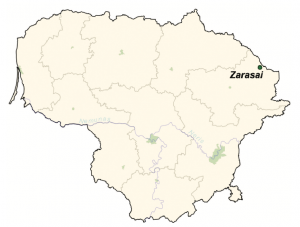
With little parental guidance, Al, always hungry, learned to fend for himself. In the summertime he invented a fruit-stealing device, and tied reeds from the lake together so he and his pals could float in the lake. In wintertime, he fashioned sleds out of discarded lumber so that they could careen down the hills and onto the frozen lakes. Years later, his talent for invention would find its way into MAD Magazine as “Al Jaffee’s MAD Inventions.”
For reasons unknown to Al, in 1932 his mother displaced him and his brothers yet again to the predominantly Jewish Slobodka district in the capital city of Kaunas. Once again, she left Al and his brothers grieving for Karolka, the comfort of his grandfather’s home, and his friends.
By 1933, when Hitler became Chancellor of Germany, Morris Jaffee had been reduced to poverty by Mildred’s constant requests for money. Anti-Semitism was on the rise throughout Eastern Europe. Fearing for the life of his family, Morris borrowed money from his American relatives and arrived in Kaunas, prepared to bring his family home. “Go tell your mother that I’m here and I’m going to take everyone back to America.”
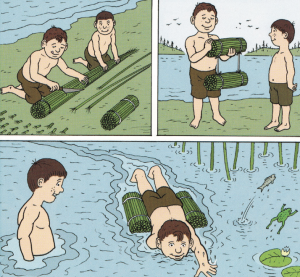
Mildred refused to leave. She would part with the three older boys, but she insisted upon keeping six-year old David, the youngest and her favorite, the child who, as a babe in arms in Savannah, had never really known his native land. However, she promised to “get her affairs in order” and return with David to America in six months.
Al’s fear that returning to America might not be “a particularly good turning point” was realized in spades. Morris Jaffee now lived in New York and worked part time as a mail sorter in Grand Central Station. The family was split up. He could not afford to hold them together. Al was separated from his two brothers who, in turn, were separated and farmed out to different relatives. Al would stay with his father, now a broken man, who could only afford to rent a single bedroom in a series of eight different households. (Because of the Depression, homeowners granted two months free rent for a single bedroom, an inducement that kept Morris and Al constantly on the move.) To this day, Al suffers from terrible stomach aches when he has to change places.
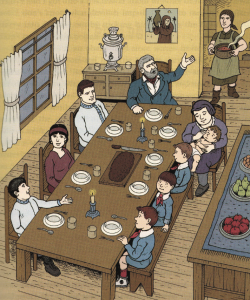
If Al first had difficulty adjusting to life in Zarasai, life for a country boy in noisy, crowded New York was at least as awful. He arrived on what was now a foreign shore, an unschooled Lithuanian boy, wearing cobbled boots, and speaking his native English with a foreign accent. He was twelve years old, but he was placed in the third grade and bullied anew. “The kids called me ‘greenhorn.’”
Ever the adapter, once again Al made himself at home. He made friends by drawing cartoon characters, this time in chalk on sidewalks. Academically, he made up for lost time in Public School 6 and then at Herman Ridder grammar school, where his art teachers were so amazed by his artistic ability that they recommended him for admission to The High School of Music and Art.
So, in 1935 Al, took a drawing test that won him a coveted place in Music and Art and changed his life forever. He found his worth. He found life-long friends. He found his career. It was there that he deepened friendships with two other art students – Will Elder and Harvey Kurtzman. It didn’t take long for the threesome to recognize one another’s comic talent. Even in high school, Kurtzman dreamed of someday starting a humorous magazine. Years later, after all three had gone their separate artistic ways – Al was drawing Patsy Walker comic books – Kurtzman became the editor of MAD magazine and hired his high school pals, Will Elder and Al Jaffee. From here on in, Al’s life took a permanent turn for the better. Together they changed the face of cartooning and humor in America. Nevertheless, Al’s years as a reverse immigrant, a man who never feels at home, made Al Jaffee the man he is today, a permanent alien who observes life in America from a distance through a unique comic lens.
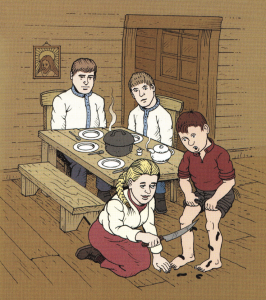
By 1939, Morris Jaffee, worried that his wife, who had moved back to Zarasai, perhaps to settle her father’s estate, would be murdered by the Nazis, along with David. He wrote to her, begging her to return with David to the states. She refused. “God will provide,” she wrote back, prompting Morris to arrange for David’s successful rescue through an American Jewish agency.
By that time, Al had made enough money to buy a modest house and bring his father, Harry, Bernard and David together under one roof at last.
Postscript: Many of the gentile citizens of Zarasai enthusiastically joined the Nazi effort to slaughter its Jews. Mildred did not survive, but Holocaust records show that one brave man defied the Nazis by hiding a Jewish family in his house. His name was Karolka Mikutovistsch (Karolis Mikutavičius).
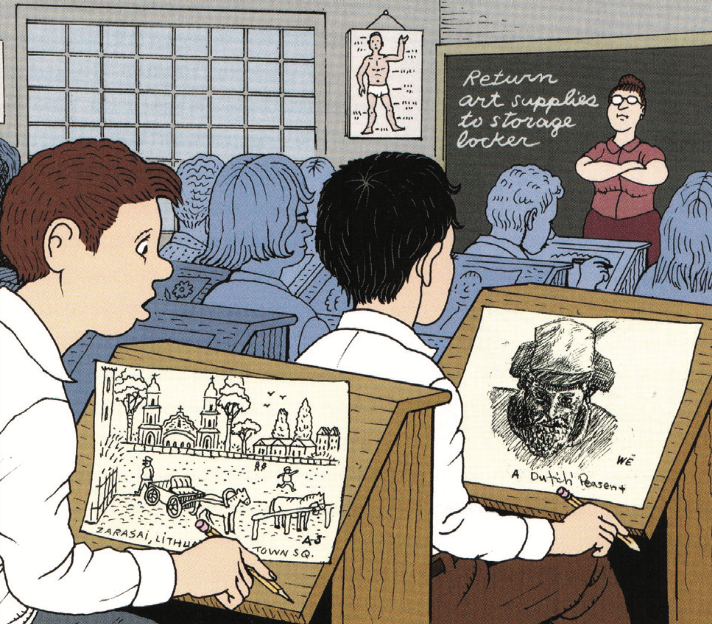
 DRAUGAS NEWS Lithuanian World Wide News in English
DRAUGAS NEWS Lithuanian World Wide News in English
